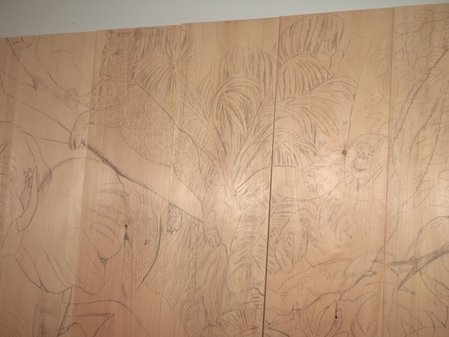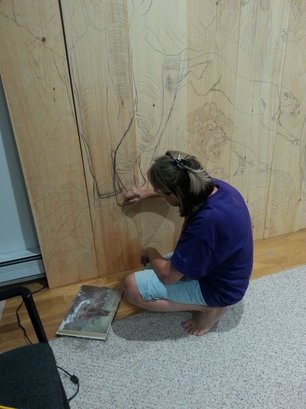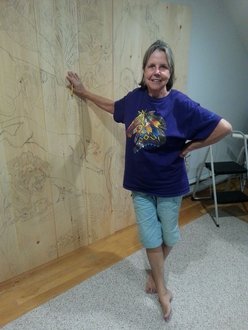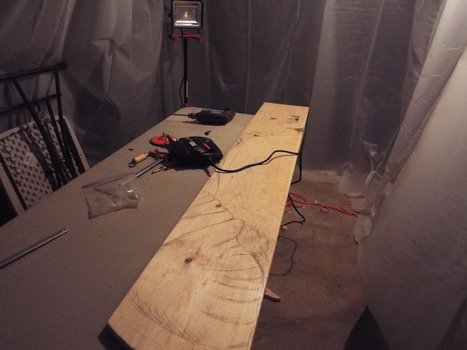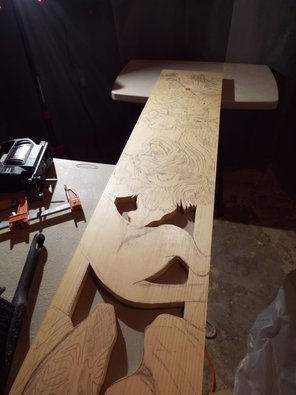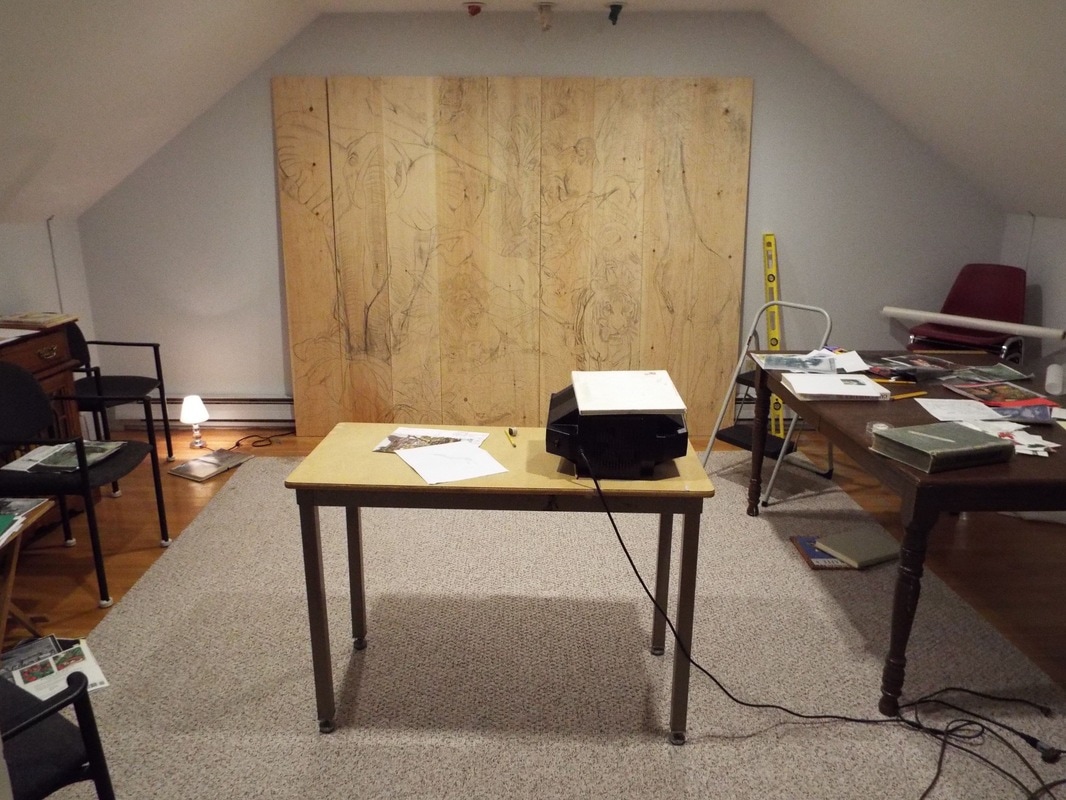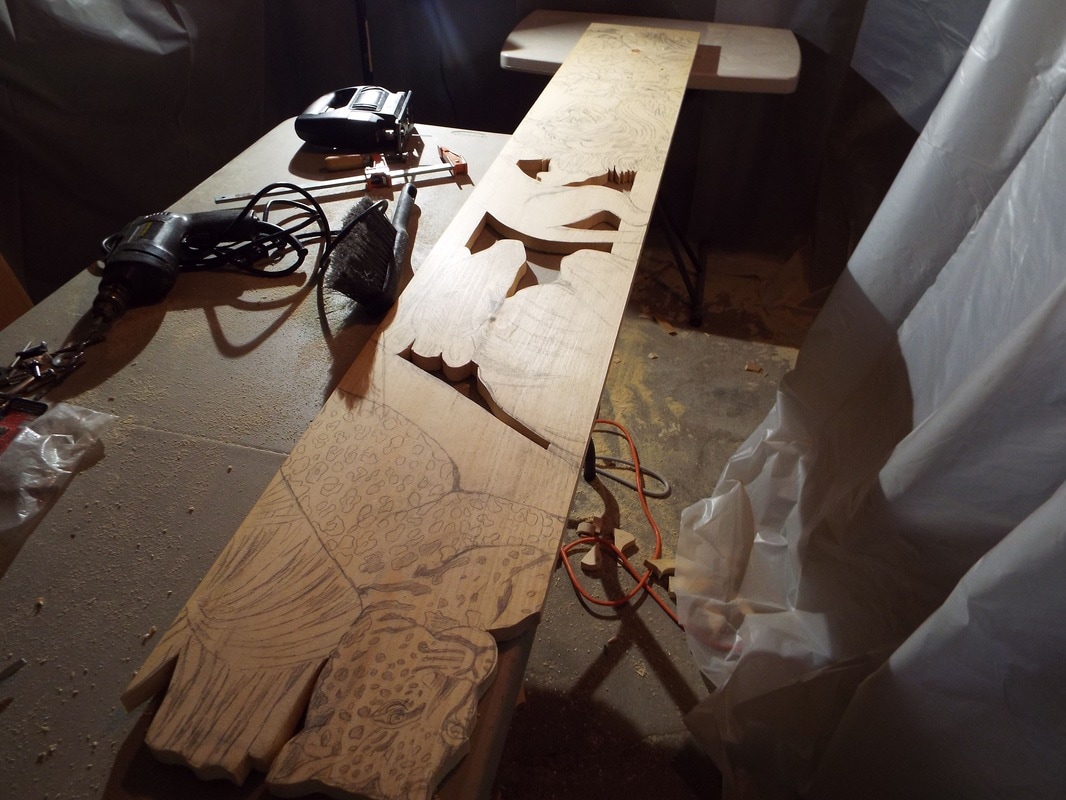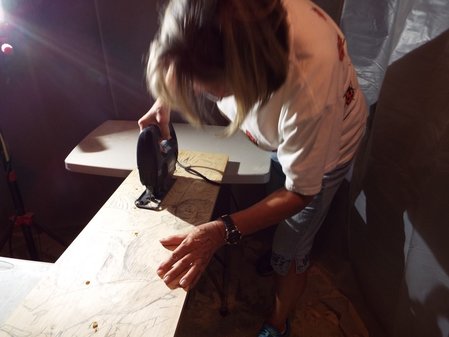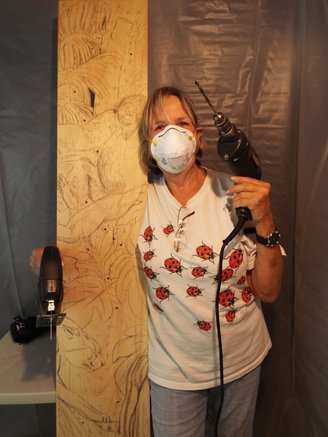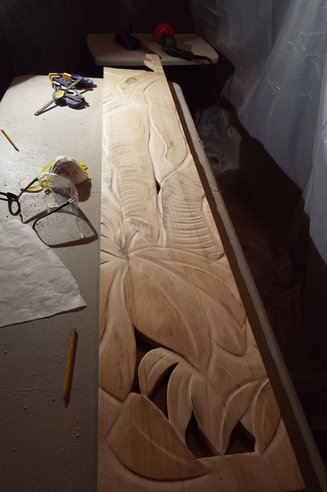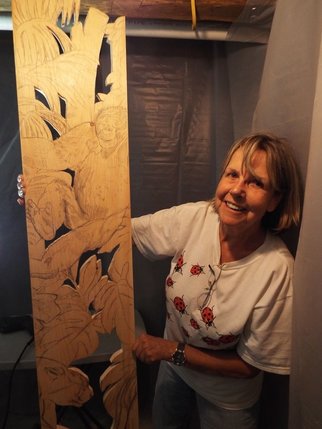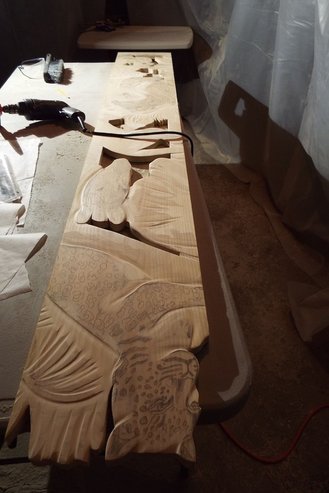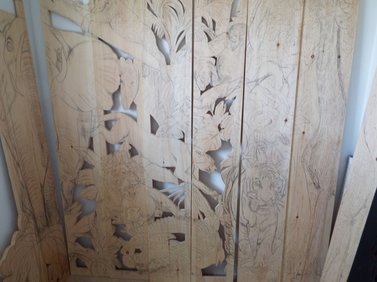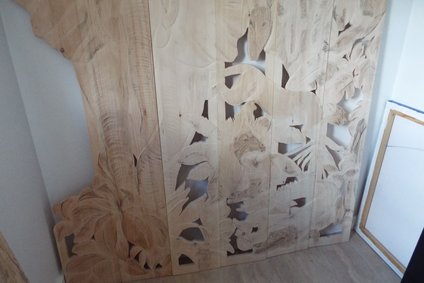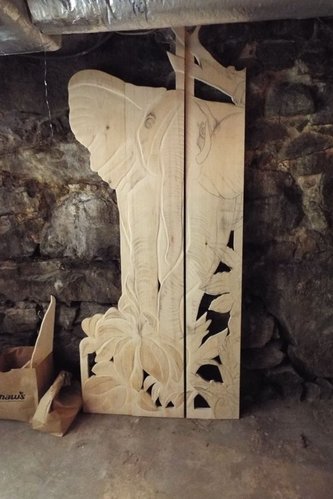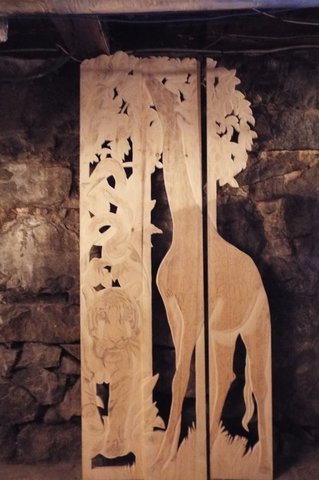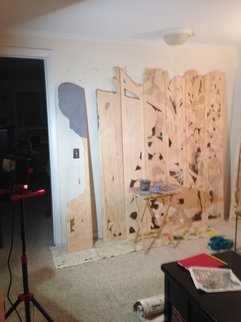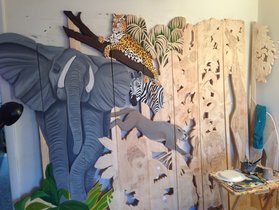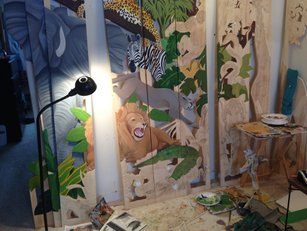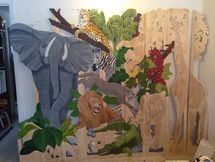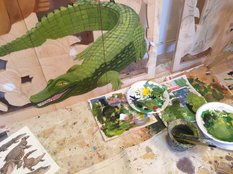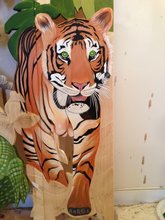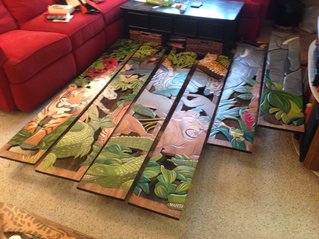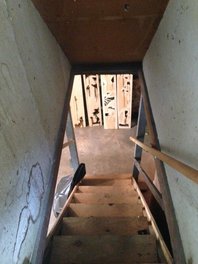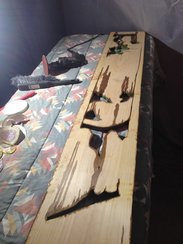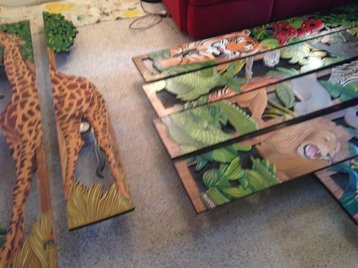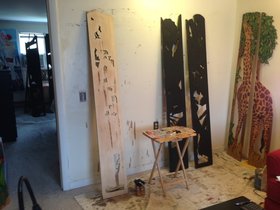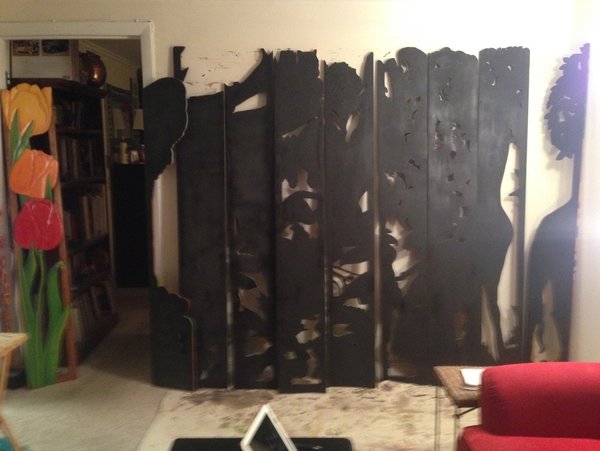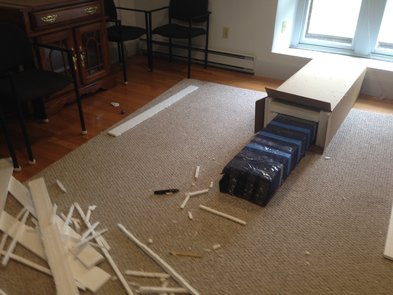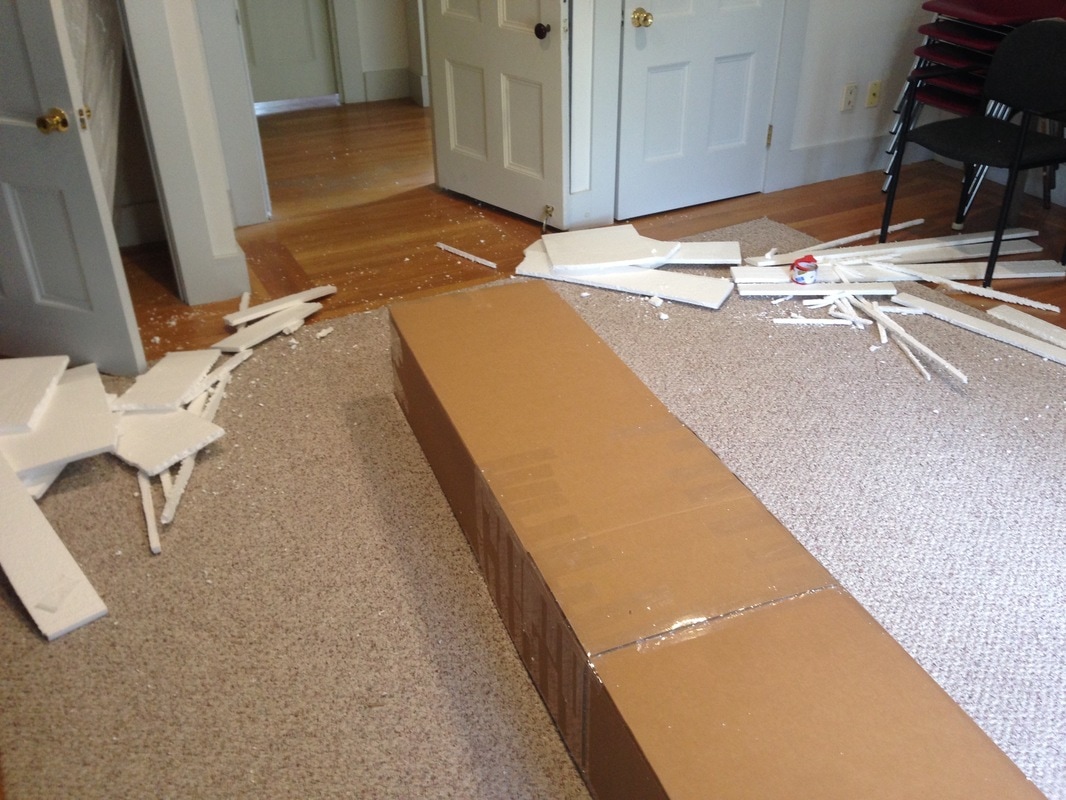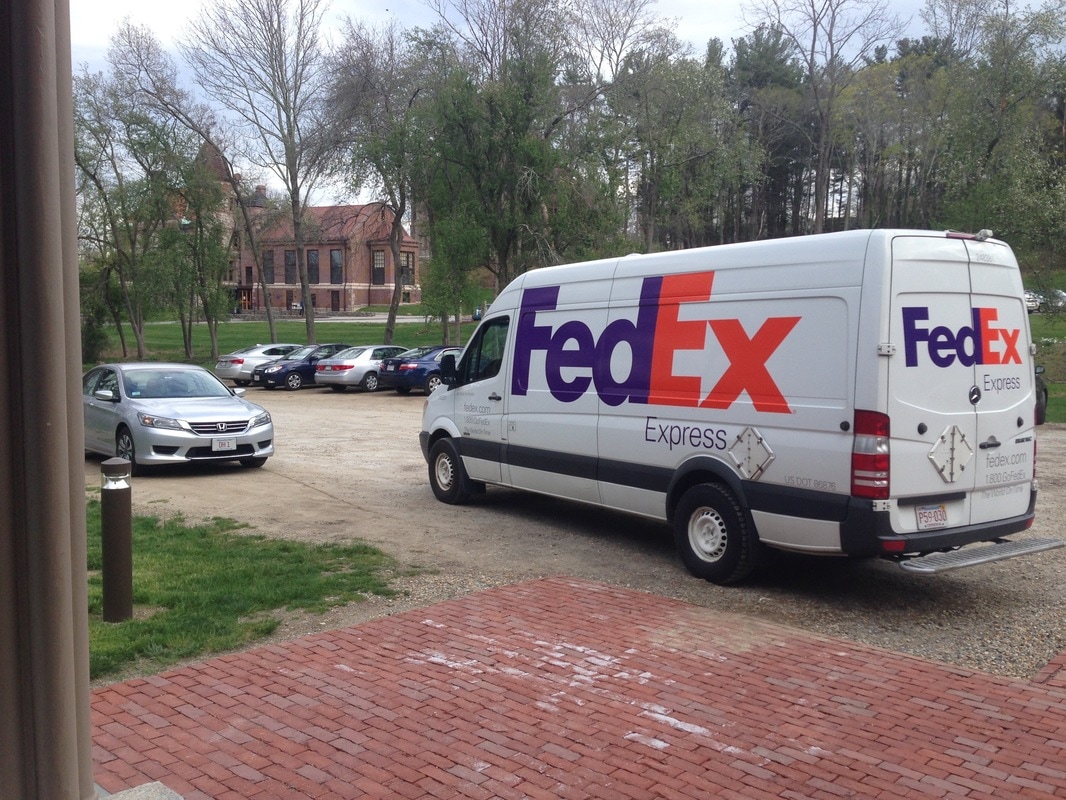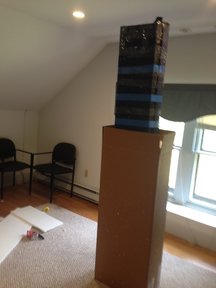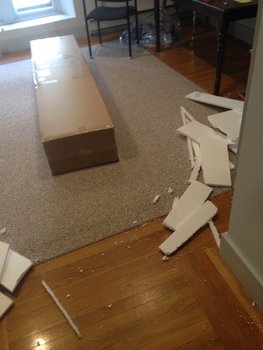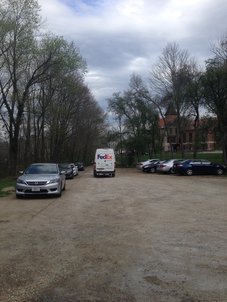|
To begin the creation of a Sculptured Screen, (here represented by the African Sculptured Screen), I first have to bring to life the Screen on which the design will be painted. This is a lengthy process that begins at the lumber yard, acquiring the best #1 Select pine boards. They must be perfectly straight, no imperfections or knotholes.
Why pine? Pine is a lovely soft wood that creates beautiful, deep curves and indentations when sculptured with a sander. In addition, the absorption of stain allows for intricate designs to emerge from the wood, which otherwise would remain unseen. Lastly, at this stage, the panels are lined up, and the drawing, which will take about month to complete, begins. The design needs to flow smoothly from panel to panel. This requires creativity, diligence, and patience. The design is not unlike designing a puzzle. June, 2015 |
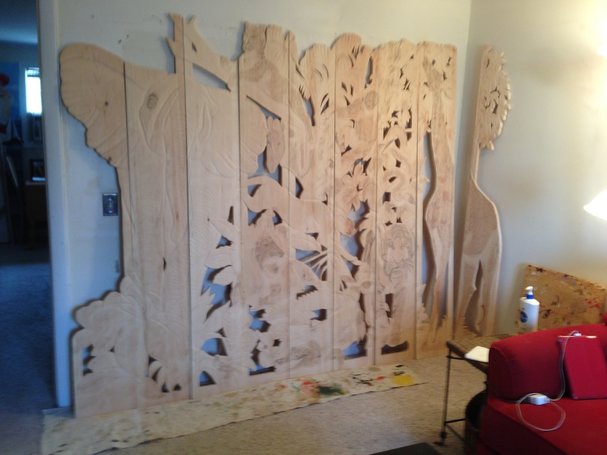
The Screen has now been cut and sculptured and is ready to paint.
January, 2016
January, 2016
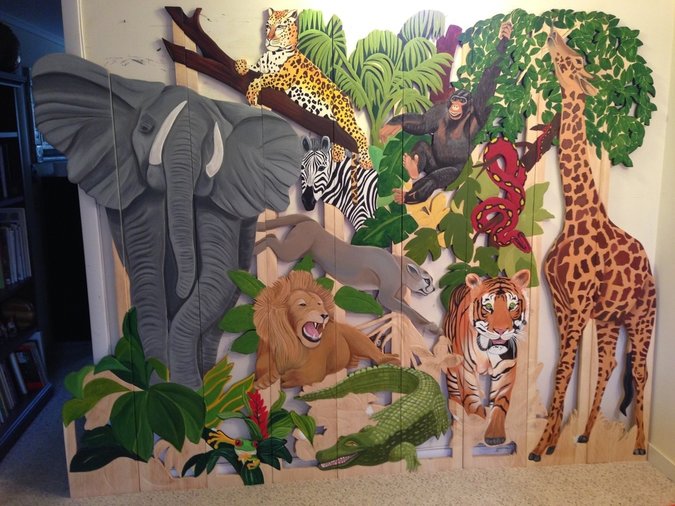
The African Screen is now ready for an oil-based stain, Minwax Early American. The stain adds color to the bare frames of the panels.
After staining, the Screen is coated with Minwax Clear Satin polyurethane.
After drying for several days, the Screen is transferred back to the cutting studio where the polyurethane drips are sanded off.
The Screen is again transferred back to the painting studio where the back is painted with two coats of Mars black and a coat of polyurethane is sprayed on. This prevents the panels from adhering to each other, especially when shipped to areas with high temperatures and humidity.
The hinges are attached to secure the positioning on the panels and removed for shipping, so the panels lay evenly.
April, 2016.
